Through Croatia with All Senses: From Sights to Bites
July 10, 2022 - As the Croatian peak season has started to roll out, tourists are arriving from all over the world, and most of them with a list of sights they must-see. Of course, Croatia is blessed with its gems and beauties every step of the way, but let me start this series by giving some insight into some delicate bites on the Adriatic. Activate your sense of taste and read through the culinary highlights that await you.
Cheese
Regardless of the occasion, a delicacy that will surely be a good choice is cheese. Especially in Croatia, which has several award-winning local kinds of cheese, one should definitely grab the opportunity and order a plate. Probably the most famous is Pag cheese or 'paški sir’ made from the milk of local sheep on the island of Pag. Another very popular option would be cottage cheese and ‘prgica’ both made of cow’s milk or the native Lika ‘škripavac', which combines sheep's and cow's milk. And let's not forget, 'sir iz mišine', an unusual type of goat's milk cheese that is traditionally produced in the areas of Dalmatian Hinterland and Velebit. It will surprise you with its sheepskin packaging and distinct flavour.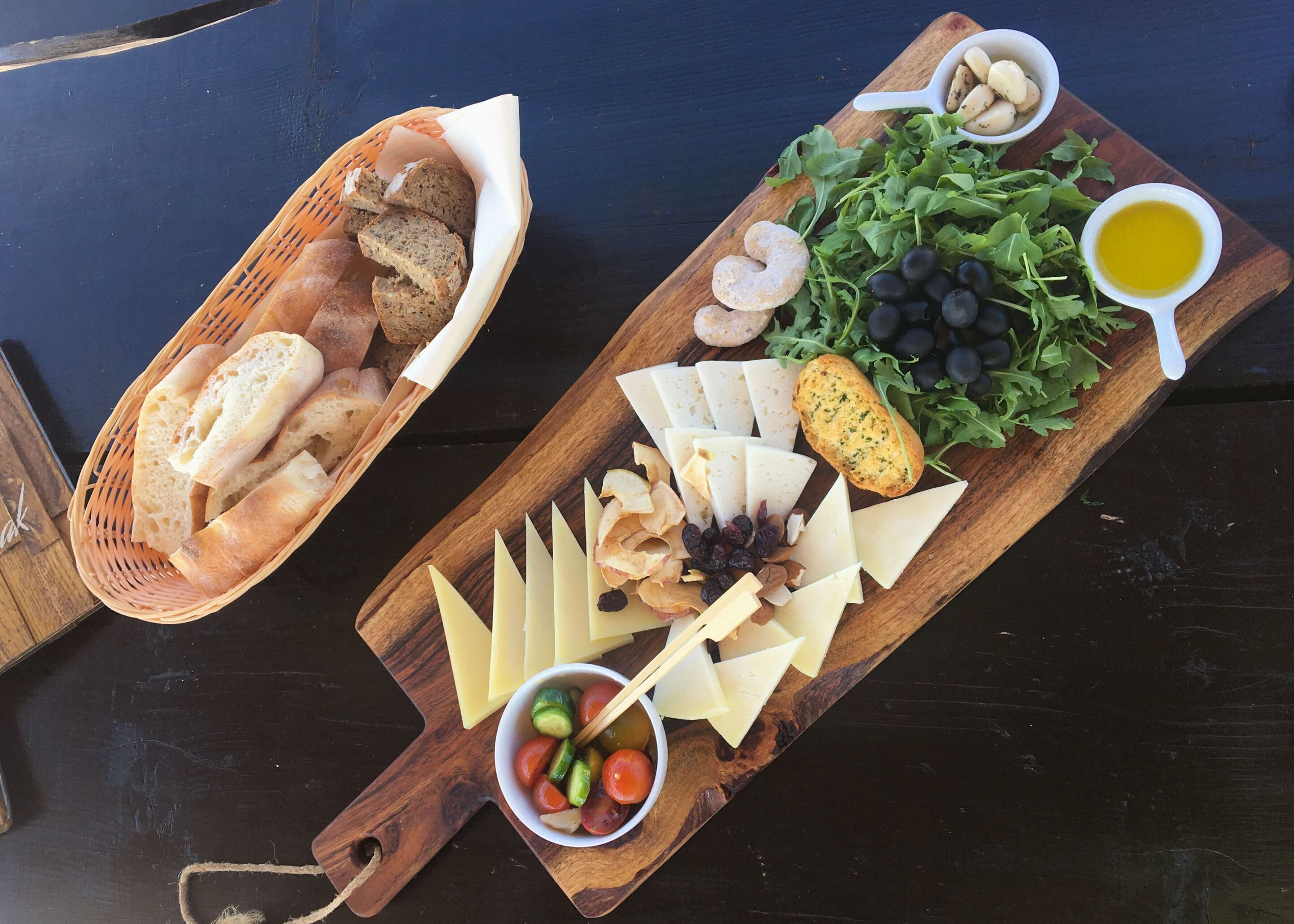
Tuna
While staying on the Croatian coast, you'll probably find grilled fish on your table at least once, usually served with potatoes and chard. However, what should be pointed out is that several experts consider the Adriatic Sea to be the optimal home to one specific type of fish –tuna. Some even declared the Adriatic tuna steak one of the best in the world. Moreover, you can actually find many other dishes using tuna. So, look out for it at a local restaurant and order one of the delicious tuna specialties.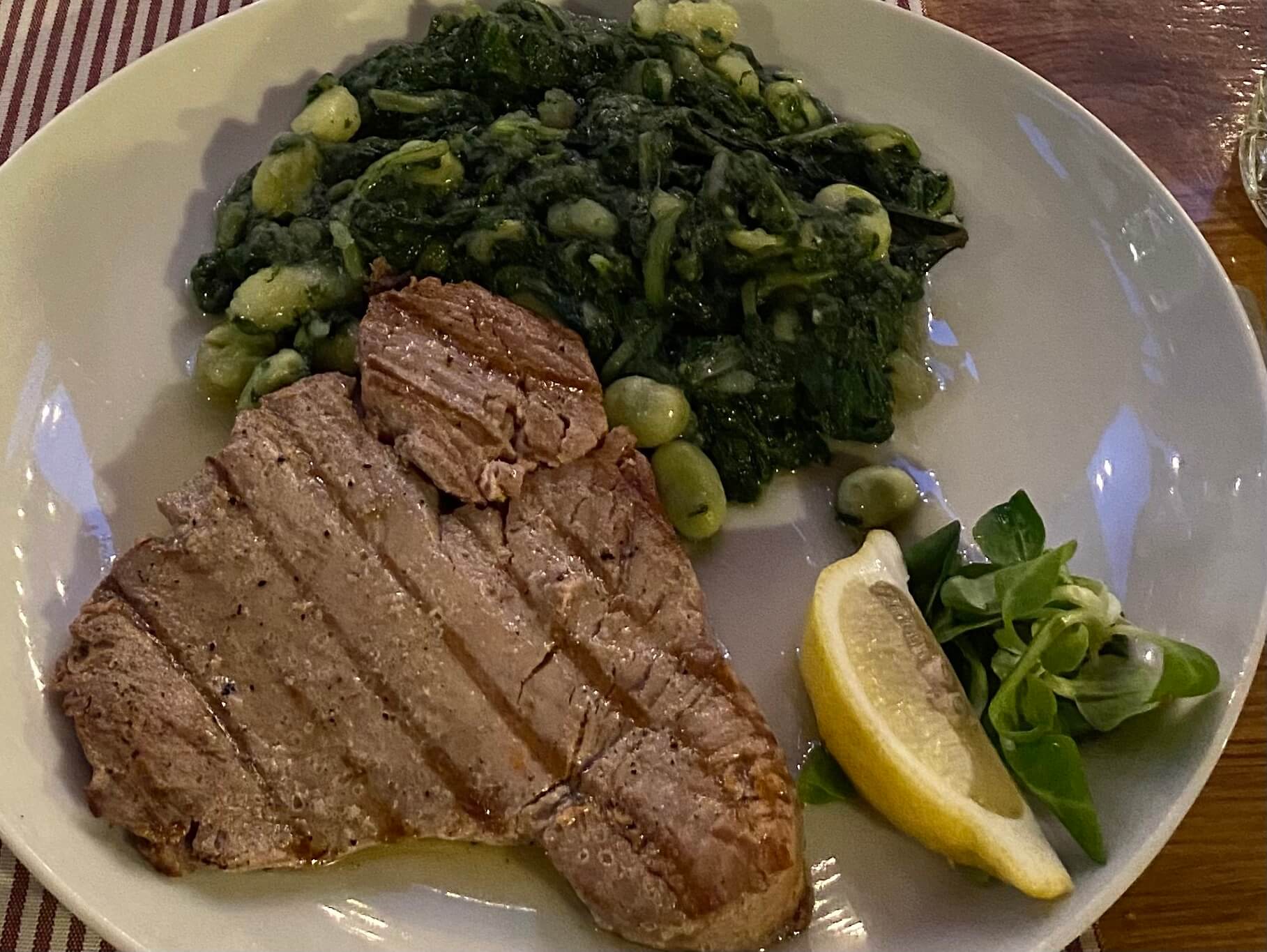

Squid
Besides fish, one should not visit the Adriatic coast and not try squid. Fried or grilled, both versions are a great catch and available on almost any menu. They are mostly served, again like fish, with potatoes and chard on the side. Just squeeze some lemon on the top and enjoy this typical taste of the Adriatic coast.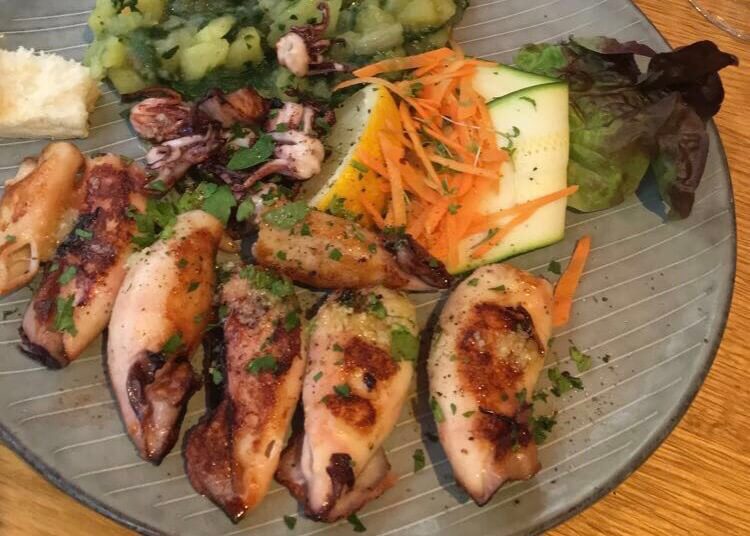
Seafood, in general
One automatically associates the sun, the sea, and the Adriatic coast as the best parts of summer in Croatia. But seafood should also join this list if one really wants to enjoy their vacation tastefully as well. From prawns to clams, oysters, and mussels, they are all available fresh in many local restaurants daily. These specialties can be served in various ways, but most often as a seafood risotto or sometimes even with homemade pasta.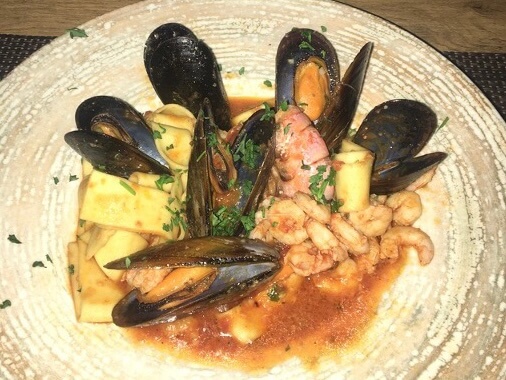
Black risotto
As the pot of gold at the end of this 1st part of the series, the famous black risotto must be mentioned. Yes, its color is black not gold, and yes, it may not look as tasty as all the other delicacies, but one thing is for sure - those who have fallen in love with this specialty certainly think of it as golden. This risotto made of squid, squid ink, and local herbs will delight with its specific intense flavor. But a little tip on the side, watch your smile when trying this culinary experience because the black ink will probably make your lips and teeth a bit more colorful for a moment.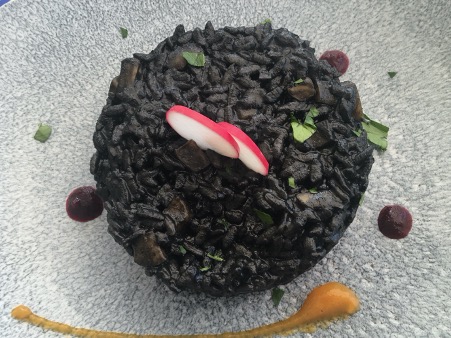
Are you hungry yet? Take a walk through the streets of your chosen destination on the Adriatic coast and start looking for ideal places where you can finally order one of the mentioned specialties. After all, "love goes through the stomach" is not said in vain. In fact, well-prepared local dishes will surely strengthen your love for Croatia, so bon appetite - or how we say, “dobar tek”.
To read more about sports in Croatia, follow TCN’s dedicated page.
Animal Friends Croatia Against Selling Live Seafood in Supermarkets
ZAGREB, July 4, 2020 - The Animal Friends Croatia NGO appealed to retail chains on Saturday to stop selling live seafood.
"We are talking about the biggest supermarkets in Croatia which we have asked several times to stop selling live animals because, aside from the inhumane conditions in which they are kept and which only prolong the suffering of already tortured animals, we are receiving calls from outraged, frantic customers who have decided to boycott shopping in such stores," the NGO said.
It called on retail chains and supermarkets to include live seafood in their business ethics and to show, "despite legal shortcomings", that they understand and acknowledge the need to protect animals by not allowing the sale of live ones in their stores.
"In that way, they are directly helping animals and, by rejecting any possibility that animals are kept, tortured, or killed in their stores now or in future, additionally building their company reputation."
Animal Friends Croatia is conducting the "Respect Our Sea" campaign with the Eurogroup for Animals, aimed at educating the public about the problem of breeding, keeping, selling and catching fish.
Although keeping live animals for human consumption is not explicitly regulated by Croatian law, retail chains and shops may decide whether to offer them on a daily basis or join the campaign.
Has Croatia Ruined its Oysters? According to an Expert, Apparently...
Have Croats managed to destroy their beloved Ston oysters with feces? Maybe. It sounds like another negative and inflammatory headline about how nobody can do anything right, but according to one respected expert, this might really be the case.
Norovirus is a potentially dangerous virus of the Caliciviridae family which causes 19 to 21 million illnesses, 56,000 to 71,000 hospitalisations and as many as 570 to 800 deaths per year according to the Centres for Disease Control and Prevention. Often called stomach flu, Norovirus is highly contagious, and is known to mercilessly tear through populations of people in concentrated areas, cruise ships are a particular favourite playground for the virus.
Symptoms, which include chronic vomiting and diarrhoea can become very severe very quickly, rendering a person unable to hold anything down, eventually leading to extreme weakness, sudden weight loss, dehydration, and the need for emergency treatment. Now we've covered the basics of this microscopic devil, how has the presence of Norovirus managed to infiltrate Ston's long oyster-based traditions? Perhaps more importantly, just how have the Croats succeeded in allowing such danger to seriously threaten Ston's most prized gastronomic offer?
As Index writes on the 5th of March, 2019, Vlado Onofri, a scientific advisor at the University of Dubrovnik spoke to Libero portal and explained that the Croats have indeed managed to destroy southern Dalmatia's internationally adored gourmet delicacy. He said that the cause was the unsolved issue of the area's sewage network, more specifically septic tanks that are full, and not being emptied. Such conditions lead to the presence of potentially dangerous viruses and bacteria, including the potentially fatal Norovirus.
Because of the presence of Norovirus on three of the five control points on which Ston's beloved oysters are grown, the Day of Mali Ston Oysters, which was supposed to take place on March the 16th, has now been cancelled for health and safety reasons.
"I'm sorry for the hospitality and catering facilities and for oyster lovers, I know they'll lose out on a lot because of this, but some things need to be said in order to start sorting things out," said Vlado Onofri rather bluntly, who claims that when it comes to Croatia's very unfortunate oyster situation, there's nobody to blame but the Croats themselves.
"There will certainly be a reaction after all of this, but come on, have someone show me that they've paid for the emptying of the septic tanks! Nobody will show you that! Except the Koruna restaurant, which I know keep their oysters in pools and they're absolutely fine for consumption. That's the only example [of that] in Ston.
The entire area hasn't had its sewage situation solved adequately, and it was the obligation of the state to resolve it at the beginning of the eighties when the sewage [system] was being done. Mali Ston and Veliki Ston were meant to be connected to the entire sewage system, this wasn't done and now after so many years, it's time to pay! You know how it goes with septic tanks, when there were small households, there were small quantities, but now there's a lot more, it's all too full up, and nobody is emptying them!" Onofri said.
This isn't the first time a virus has appeared in these oysters.
"Three years ago, there was a problem. People got food poisoning, started having diarrhoea, vomiting... that's Norovirus, viruses aren't harmless things, that virus can live for hundreds of years in sludge, when it comes across live tissue, it becomes virulent again (a pathogen's ability to infect its live host) because it crystallises its capsomer (a covering of protein that protects the genetic material of a virus). I'm good with virology and I know what I'm talking about because I did a Master of Science in the 1980s, and later a doctorate in Ston,'' Onofri explained, backing up his claims.
"We're dependant on the whims of humans and nature"
He also provided a response to the question of how long this dire situation might last:
"The oysters can quickly get rid of the virus if they're in clean water, meaning that we need purification pools that we don't have. There was an idea to make them in Bistrina, and I personally brought plans from France to show what this should look like. There were ideas thrown around about doing that, but it hasn't been done. This is an absolute necessity, for when such things do happen, to end up with a sanitised and proper product. Now we're depending on the whims of humans and nature when it comes to how our products end up! The pools weren't made because of a protected reserve where nothing at all can be constructed,'' stated Onofri.
Make sure to stay up to date by following our dedicated lifestyle page.
BREWTAL: A New Craft Beer Festival on Rab!
The best known craft breweries from Croatia and abroad are coming to BREWTAL Craft Beer Festival! BREWTAL will be held on Paradise beach (Rajskoj plaži) in Lopar on the island of Rab from June 10 to 12.
Chops Grill: Your Steak and Seafood Haven
Chops Grill Steak & Seafood, located in the center of Split just off of Marmontova, offers an incredible array of great steaks and seafood, pastas and salads, all paired with carefully chosen Croatian wines. They serve breakfast, lunch, and dinner, and are open 7 days a week.
Chops came to exist because there seemed to be an urgency for more international restaurants in the city center. There needed to be something with a spacious seating area unlike the crowded tables in the alleyways, and something with a new and innovative concept. Already having put together a highly experienced management team that had specialized in tourism, Chops was ready to join the ever growing restaurant scene in Split, and introduced Splićani to something a bit more international. Therein lies Chops, the first proper steakhouse in Split, and we’re definitely not complaining.
Best Seafood Restaurants in Split? Look No Further!
Split, being the second largest city in Croatia, has an incredible amount to offer. From Diocletian’s Palace, to idyllic isles, and maybe most importantly: street lined restaurants selling succulent seafood.
It’s hard enough to decide where your next meal will be in Split, with a plentitude of options and a cheerful maître d' awaiting your arrival, it can get increasingly overwhelming. Because we encourage you to live like Dalmatian’s do when you’re in our city (all about relaxing) and because we know Split like the back of our hands, we’re here to narrow this down for you simply. Here are two of the best seafood restaurants in Split, for those nights you’re in Split and well, you want seafood!


